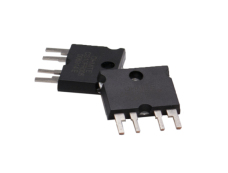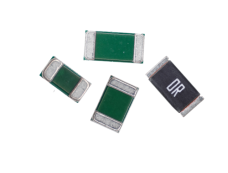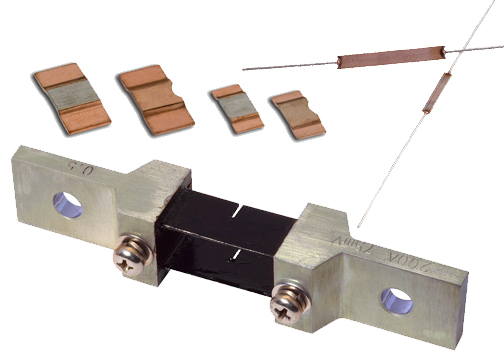Metal Element Resistors
Metal element power resistors, or Shunt power resistors, are produced using a solid piece of resistance material. Depending on the material chosen, these resistors can yield great stability in very low values. This stability can be difficult to achieve in other constructions at such low values. The low values and single material construction also allow high current handling, in some cases up to 1200 amps. Shunts are commonly used to measure the current output of a circuit. The voltage drop across the extremely lower resistance value can be used to calculate current flow in high current applications.

10 Series - Axial Wire Element Current Sense
Axial Wire Element Current Sense Two and Four Terminal Axial Ohmite’s 10 series current sense resistors are available in a standard two-terminal axial and a four-terminal Kelvin design. 1%…
Read More View in Catalog
60 Series
Ohmite’s 60 Series Four Terminal Bare Element Resistors provide ultra-low resistance values for relatively high current requirements.
Read More View in Catalog
60S Series
The 60S series current sense resistor series design has low termination stress (“J” terminals), and flexible leads for thermal expansion.
Read More View in Catalog
ARCOL CRS Series
Available in two sizes ARCOL’s CRS utilizes Electron Beam Welding technology to connect its Manganin or NiCr element to heavy copper connectors.
Read More View in Catalog
CS10 Series
The CS10 Series utilizes state of the art technology to achieve highly reliable non-inductive performance.
Read More View in Catalog
CS5 Series
The CS5 is a high power precision current sensing resistor designed with four terminals.
Read More View in Catalog
EBW Series
The EBW Series are manufactured using electron beam welding technology.
Read More View in Catalog
FC4L Series
Ohmite extends its FCSL Series with this 4-terminal Kelvin type FC4L derivative in package sizes up to 5 watts.
Read More View in Catalog
FCSL Series
Ohmite continues to add to its complement of Current Sense offerings with the FCSL Series.
Read More View in Catalog
FK/GK Series
Ohmite's FK/GK Series is a low-resistance, 4-terminal element resistor with a power rating up to 5W.
Read More View in Catalog
JR Series
The JR Series chips are the first ever jumper chips that Ohmite has carried in its 90+ year lifespan.
Read More View in Catalog
LVK Series
Current sense resistors enable the measurement of current flow in a circuit by monitoring a voltage drop across a precisely calibrated resistance.
Read More View in Catalog
MCS Series
The MCS series current sense resistors are constructed with a Cu Terminal Electrode and Pb Free terminations (60% Sn, 40% Ni).
Read More View in Catalog
PCS Series
Ohmite's PCS Series low resistance value chip resistors provide users with high precision current sensing and voltage division. It also offers low TCR, excellent long-term stability, and RoHS compliance.
Read More View in Catalog
S Series Shunts
Ohmite S series shunts are Ideal for lab environments or other applications requiring current handling up to 1200 amps.
Read More View in Catalog
SHA Series Shunts
Ohmite SHA series shunts are ideal for battery management systems, motor controls or other applications requiring current handling up to 1000 amps.
Read More View in Catalog
SB Series
The SB Series from Ohmite offers a power rating up to 5 watts and resistance values down to 5 milliohms.
Read More View in Catalog
SH Series Shunt
Precision metal clad resistors designed in four terminal technique, are distinguished by high load capacity as well as excellent accuracy.
Read More View in CatalogWhy Should You Partner with Ohmite?
Stability: Leader in Resistive Technology for 100 Years
Ohmite has manufactured resistors for 100 years! We've demonstrated a proven track record of creating quality resistive products for high power, high energy, and high voltage applications.
Flexibility: We are Experienced Problem Solvers
Whether it's our expansive catalog of standard parts, our many customization options for each series, or our ability to develop brand new products based on customer designs, Ohmite is dedicated to solving engineers' problems.
Accessibility: We're Here to Help as Trustworthy Partner
Ohmite's team of engineers are available to explain our technology, answer your questions, and consult on important design decisions to help make our customers' lives easier.

